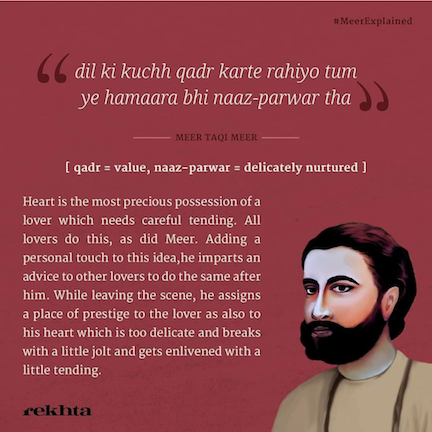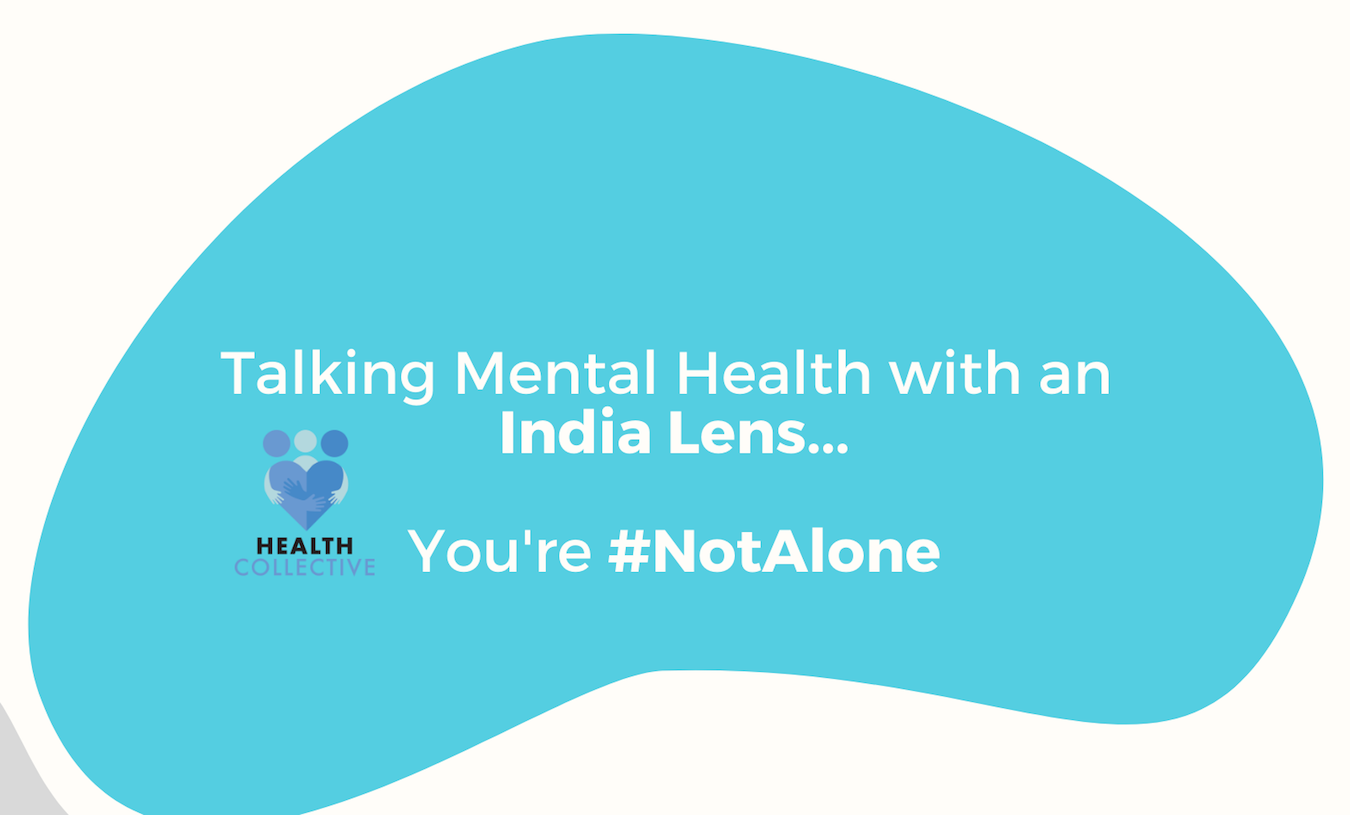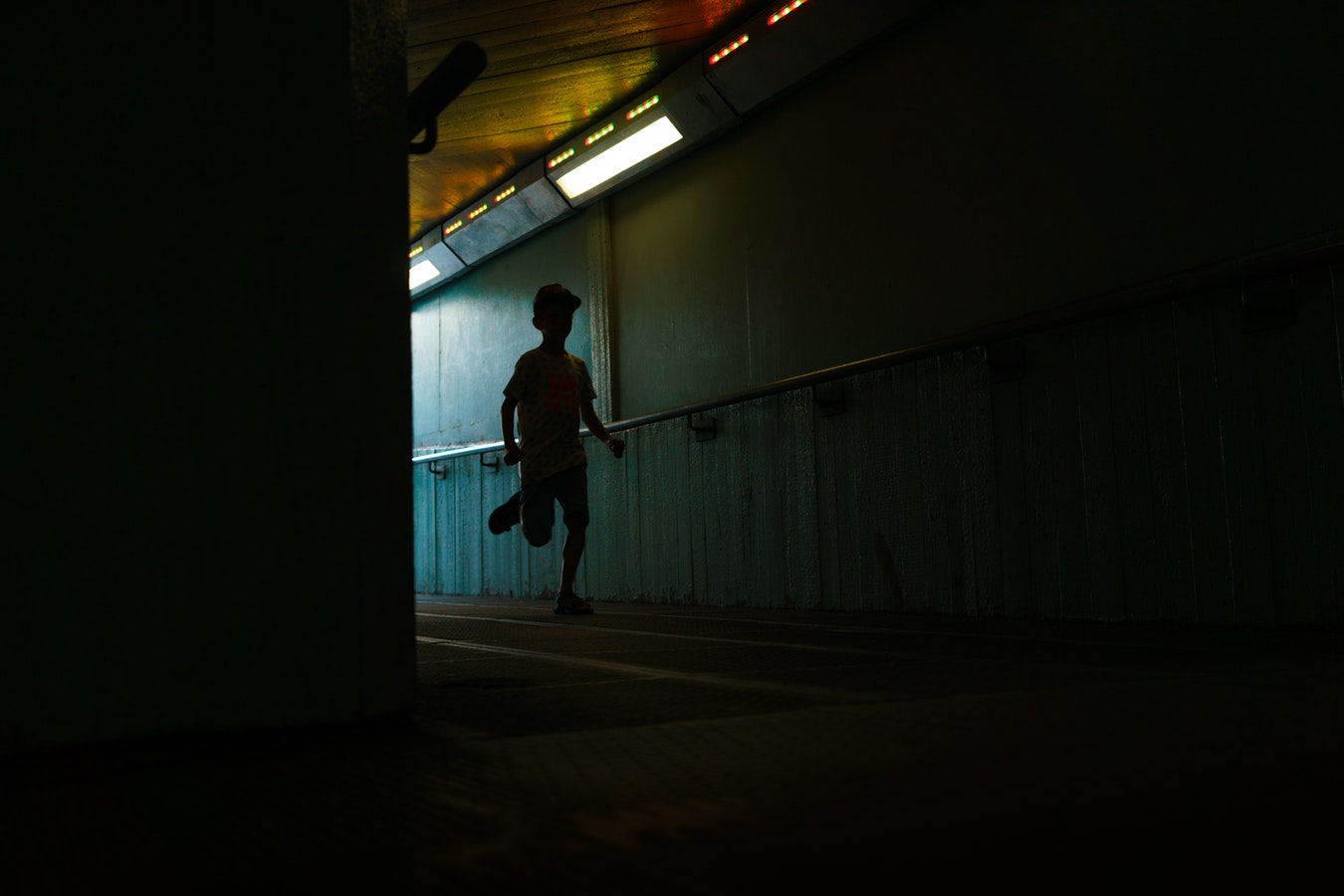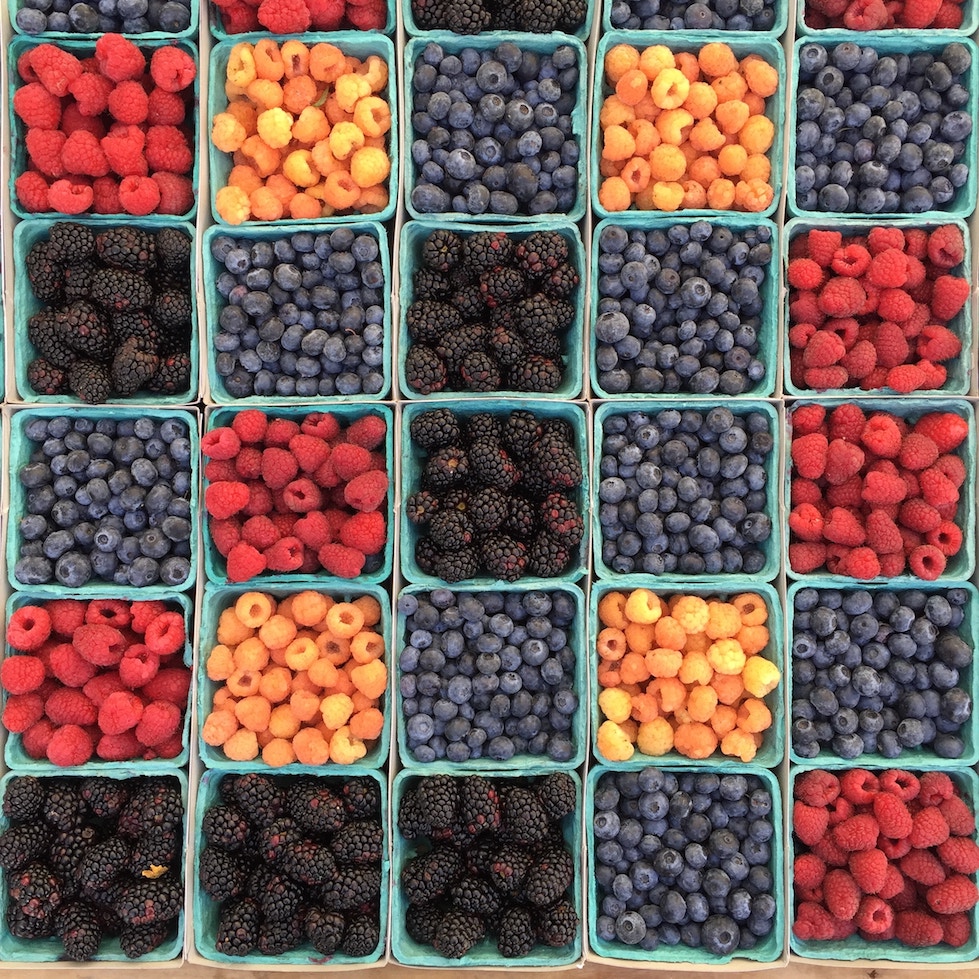Your Stories: How the Urdu Ghazal became ‘Therapy’ for Me
By Ilina Acharya
Part of my healing and recovery process, which in my case is managing my anxiety and learning coping skills, is finding new forms of therapy for myself. This is not an alternative to clinical therapy; by ‘therapy’ here, I mean self-care.
Clinical Therapy is also a form of self-care and a safe space to reclaim agency and dignity. It was definitely a good place to start the process for myself. To my pleasant surprise, one of the little pockets of self-care, apart from the frequent hour-long visits to my therapist, became the Urdu ghazal.
I recently started learning how to read and write Urdu in order to learn some aspects about the historical and literary culture of the Indian subcontinent. But I won’t get into that. In Urdu as a language, however, I found in my mind another safe space to go to; it was a space away from the numerous thoughts in my head. Urdu became a space for ishq ‘love’, compassion and understanding, and a natural antidote to worry and anxiety.
ALSO READ: UNDERSTANDING THERAPY
My interest veered towards the Urdu ghazal. Its literary elements helped make the ghazal ‘therapy’ for me. I won’t get into jargon; the ghazal is after all simply about human character and relationships, the heart and its motivations.
The ghazal gave me the perfect template, much like clinical therapy to explore my emotions. It gave validation to my feelings, provided me with a mirror to look at myself closely and compassionately, and made my mental experience — the part of our lives that is hidden from the world but is almost our entire world — feel ‘real’; just by being physically out there. It also made me feel less alone. Even two lines of a couplet could shut off that inner critic and the multiple voices. Each couplet is a world unto itself with endless possibilities and dynamics. It was a welcome shift from a cluttered mind to the safest and truest space of all — the heart. And as I said, the ghazal is all heart.
ALSO READ: SELF-CARE IN THIS JOURNEY CALLED LIFE
A background to the ghazal
So what is it about the ghazal?
Despite my disdain for fixed formulas, there is a helpful template of sorts to understand the ghazal. This template comprises the formal elements that make the ghazal what it is. Simply put, it is what characterises the ghazal. Much like the laid out boundaries and rules of the clinic, the ghazal’s formal aspects and rules provide me with a basis for ‘therapy’. In other words, it is the ground in which I can explore and investigate my thoughts and emotions.
The world of the ghazal is an unfair and imperfect one. It consists of two permanent, main protagonists: the pining, grieving, committed lover, and the elusive, absent Beloved. Firaq and furqat, or separation, is the constant, inevitable reality of/in the ghazal world: aa phir se mujhe chod ke jaane ke liye aa… The very structure of the ghazal relies on the fact that there can never be qurbat or union of the two. It is from within this template of absence and presence of the lover and beloved that human relationships and character is explored.
One of the ways through which this is done is through dialogue and grievance towards the beloved. That is why the beloved is often likened to a tyrant or oppressor, and paradoxically called the enemy or zaalim. There is jafaa or the tyranny of the beloved. You will find these popular tropes in Bollywood too: the crazed lover is paagal, mad, or deewana/ deewani, kamali, and so on. The passion and ‘madness’ of the lover is also likened to a malady that no doctor can cure. In a couplet by the 16th century poet Muhammad Afzal from his long poem Bikat Kahani, a lover finds himself isolated by his fellowmen because he is too sick from love and has gone crazy. The stigma of love! [read: mental health]. The grieving lover is also found seeking ‘councel’ from a sakhi ‘friend’, baaji ‘elder sister’, naseh ‘a councellor and advisor’, or gham-khvar ‘consoler and sympathiser’.
jo dil qabu mein ho
And that is why, in the Urdu ghazal, I have come across so many different words for pain. Urdu has a dirth of words describing a range of emotions for pain and its variants. One can create an Urdu dictionary of pain! Take this couplet by one of my favourite poets Dagh Dehlvi, poet-laureate of Delhi and one of the last of the classical poets:
جو دل قابو میں ہو تو کوئی رسوائے جہاں کیوں ہو
خلش کیوں ہو تپش کیوں ہو قلق کیوں ہو فغاں کیوں ہو
jo dil qaabū meñ ho to koī rusvā-e-jahāñ kyuuñ ho
ḳhalish kyuuñ ho tapish kyuuñ ho qalaq kyuuñ ho fuġhāñ kyuuñ ho

Dagh’s couplet describes the many shades of a troubled heart. But it is a heart that co-exists with seemingly contrary states: a heart that is steadfast is also incredibly insecure. One state does not and maybe cannot be independent of the other. And maybe the heart will remain a complex, misunderstood object, even misunderstood by one’s own self. Or it might suggest that human emotion is transient and fleeting: at times, it is just when you feel secure, that the heart in its unpredictability turns the other way. It also tells me to be open to getting hurt. The rest of the ghazal goes on to explore this complexity and contradictions of human behavior and the heart.
intezaar…
It is in this pain and grief-stricken world of the ghazal that I am able to take solace. The ghazal is my gham-khvar. Contrary to my ‘desire’ — because the ghazal is all about desire — for perfection, the ghazal demands intezaar ‘an endless, infinite waiting’. For the forlorn lover, intezaar is the desperation for union with the beloved. The beloved is also signified as God, bringing the ghazal a sufi and spiritual angle. The beloved can be interpreted in many other different various ways. At times, the beloved is my desire for accomplishment and that elusive signpost ‘success’. Or I am both lover and beloved as I learn to accept and come home to ‘me’. It reminds me that healing is a process and that mental health, or any aspect of living is a spectrum. It is a state forever influx and never a perfect goal. It is the realisation that things take time and that all it takes (at least for me) is a little bit of faith, though hard to come by. Intezaar needs acute patience, but there is also the joy, desire, pain, and hope in waiting. Ishq — the central theme and concept of the ghazal — is here in the waiting, in spite of the waiting, and the pain and agony that comes with it. It is also about sitting with the discomfort of it.
But this is not a pessimistic or nihilistic viewpoint. This is not to say your story is doomed from the start. It is the acknowledgement that just as it is for the forlorn lover, life is love (ishq), but also immense hurt and pain. And that is where the ghazal shows compassion.
A sick society
The ghazal world mirrors our world. It is not only rooted in human lives and day-to-day ‘earthly’ living. It also depicts the kind of society we live in. If Foucault and Derrida taught me one way to question society, the ghazal too makes me question myself as well as society and its problems; but with compassion and kindness. The ghazal is unconventional in that it goes against tradition and the conventional notions of society. (Dehlvi’s poetry especially does that.) It makes me question my own internalisation of warped social norms and to dare to break the rules.
Take these lines, sung beautifully here by the Lahore based musician and academic Ali Sethi. From the ghazal “Dil jalane ki baat” by Javed Qureshi:
todni hai hamein jahaan ki rasm
tum nibhaane ki baat karte ho
I want to break all the rules and conventions
And you here talk about following them
Ali Sethi sings “Dil Jalaane Ki Baat”, a ghazal by Javed Qureshi
Or this couplet:
saari duniya ke ranj-o-gham de kar
muskuraane ki baat karte ho
You have given me all the grief of the world
What is this talk of happiness?
If society itself is sick, as these couplets establish, what is the stigma surrounding mental health about? One can then question the notion of wellness itself. Can anyone truly be well in a sick society? No wonder the lover does not have any ‘dava’ or ‘daaru’ for cure. It also tells that mental health is not just placed at a personal, individual level, but is also deeply structural and societal. But maybe healing and living you truest life, being free can be an act of rebellion against a sick society.
Journey to love and light
https://www.youtube.com/watch?v=cGHpidoPdWs
Ali Sethi’s “Ishq”
If fear and worry is one side of the coin, the other side is life and love. Why do you think when ridden with anxiety, one is asked to breathe and focus on one’s breath? It is the very source of life itself. The other source of life is love/ishq. In that sense, the lover lives life in the truest sense of the word. Ishq is the daru and dava that both kills and sustains the lover, a bit like life itself. Similarly, ‘ishq’ is a loaded term in this song; it is not merely romantic love, as the ghazal has established. Here it can be a metaphor of coming out of depression and coming back home to the self, but not being quite there yet. It is not an easy path but there is healing; the kind of coexistence we see in Dagh’s couplet:
“Gum hue jo raaste/ mera pata dene lagein”
Those familiar trodden paths are now calling back to me
Or this beautiful couplet:
ek mein tha aur thi tanhaii
kaat kaat ke bhi kat nahin payi
It is from isolation and losing one’s way that one emerges on to the path of light and love. Another of my favourite musicians, guitarist Bhrigu Sahni said, “It is only when one is lost that one finds something new.” I have interpreted this philosophy in one of my own songs:
and when the lights go
that’s all I see
the ocean about me
‘takes me where I need to be
Seeing Ali Sethi is my current favourite, here is not a ghazal but a composition and collaboration with the legendary sufi singer Abida Parveen. It talks of faith with passion and poignancy, and what better note to end on?
With Urdu lyrics and translation in the video
chaaye kahin jo gehra andhera
teri ‘ata se aaye sawera
teri hi khalqat chaand tare
tu ne hi bakshi yeh roshani hai
Note: I am not endorsing the ghazal as an alternative to clinical therapy.
I have not gone into exploring the depths of poetry in the couplets but given a cursory understanding of the ghazal.
Word meanings in order of appearance in couplets
qabu: control
rusvā-e-jahāñ: disgraced in the world
khalish: state of unease
tapish: agitated and restless
qalaq: troubled and anxious
fugaan: lamentation, cry of distress
rasm: coded conventions
ranjo o gham: grief and sorrow
tanhaii: loneliness
By the Same Author:
Legends of Tomorrow: Talking Mental Health and Queer Lives through Sci Fi and Fantasy
Disclaimer: Material on The Health Collective cannot and does not claim to substitute for expert advice from a trained professional. Share your stories with us, if you like — Tweet @healthcollectif or mail us right here
Photo by Rawpixel.com




nice article
These is a really great article, thank you for sharing and i would like to say that, please keep sharing your information for us.